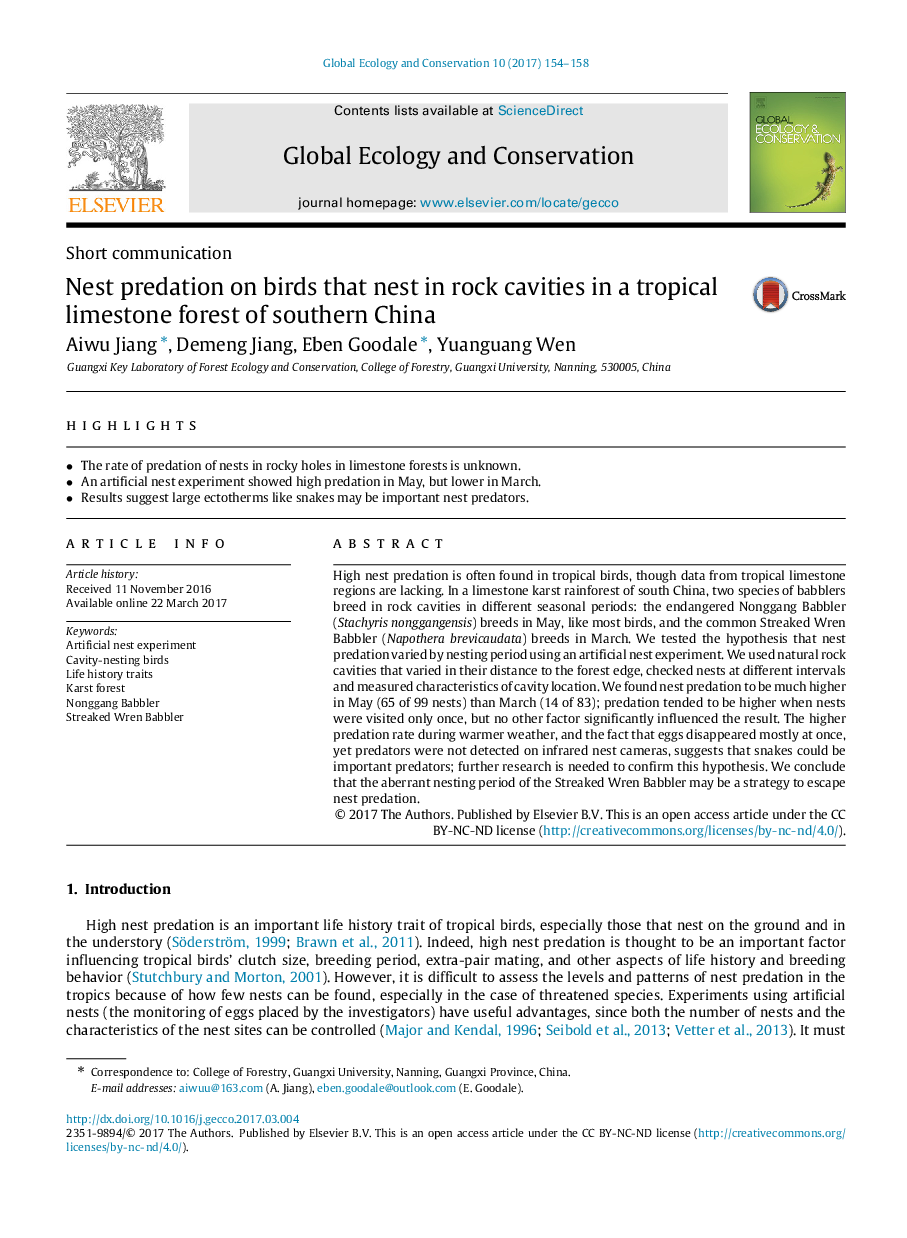| Article ID | Journal | Published Year | Pages | File Type |
|---|---|---|---|---|
| 5742382 | Global Ecology and Conservation | 2017 | 5 Pages |
â¢The rate of predation of nests in rocky holes in limestone forests is unknown.â¢An artificial nest experiment showed high predation in May, but lower in March.â¢Results suggest large ectotherms like snakes may be important nest predators.
High nest predation is often found in tropical birds, though data from tropical limestone regions are lacking. In a limestone karst rainforest of south China, two species of babblers breed in rock cavities in different seasonal periods: the endangered Nonggang Babbler (Stachyris nonggangensis) breeds in May, like most birds, and the common Streaked Wren Babbler (Napothera brevicaudata) breeds in March. We tested the hypothesis that nest predation varied by nesting period using an artificial nest experiment. We used natural rock cavities that varied in their distance to the forest edge, checked nests at different intervals and measured characteristics of cavity location. We found nest predation to be much higher in May (65 of 99 nests) than March (14 of 83); predation tended to be higher when nests were visited only once, but no other factor significantly influenced the result. The higher predation rate during warmer weather, and the fact that eggs disappeared mostly at once, yet predators were not detected on infrared nest cameras, suggests that snakes could be important predators; further research is needed to confirm this hypothesis. We conclude that the aberrant nesting period of the Streaked Wren Babbler may be a strategy to escape nest predation.
